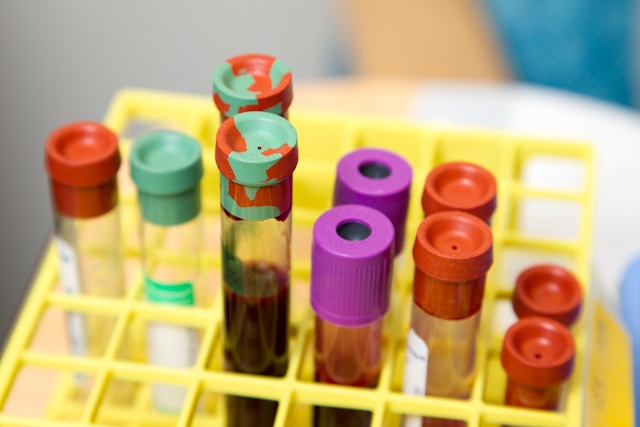Over 30,000 were infected with hepatitis C and HIV due to NHS blood products; the virus remains a significant health threat
The results of the public investigation into the contaminated blood scandal, the largest treatment mishap in NHS history, have been published. Between 1970 and 1991, tainted blood products and transfusions infected over 30,000 individuals with hepatitis C and HIV. More than 3,000 of them have since died. Many of the victims were haemophiliacs receiving contaminated blood products as part of their medical care.
Following the Infected Blood Inquiry, which collected testimony between 2019 and 2023, Chairman Sir Brian Langstaff presented his conclusions. Prime Minister Rishi Sunak is also expected to issue an apology today. Ros Cooper, infected with hepatitis C after treatment for a bleeding disorder as a child, told BBC Radio 4’s Today programme that an apology from the government “won’t bring back the dead.”
Hepatitis C is a virus that can affect the liver, sometimes resulting in significant liver damage if left untreated. Over many years, untreated hepatitis C can lead to liver scarring (cirrhosis), causing the liver to malfunction. Severe cases can progress to liver cancer or liver failure, where the liver loses most or all of its functions. In the UK, an estimated 118,000 people had chronic hepatitis C in 2019.
Hepatitis C often shows no signs until severe liver damage has occurred, leading to many people being unaware they are infected. When symptoms do appear, they may resemble flu, such as body aches, fever, fatigue, appetite loss, and nausea. Testing is the only way to confirm hepatitis C as the cause of these symptoms.
Hepatitis C infection occurs through contact with infected blood. Injecting drug users or those who have injected drugs in the past are the main source of infections in the UK, with about 50 per cent of drug injectors having the virus. Other transmission methods include sharing unsterilised needles, sharing razors or toothbrushes, transmission from a pregnant woman to her unborn baby, and unprotected sex.
To test for hepatitis C, a blood test is required. Individuals can use a finger-prick test at home, or visit GPs, sexual health clinics, genitourinary medicine (GUM) clinics, and drug treatment programs for testing. Treatment for hepatitis C involves medication to prevent the virus from growing within the body. Patients typically take ribavirin (a pill or capsule) and pegylated interferon (a weekly injection). Another alternative includes daclatasvir and sofosbuvir tablets.
These new hepatitis C medications have been found to shorten treatment durations, improve treatment efficacy, and are easier to tolerate. More than 90 per cent of hepatitis C patients may be cured with the most recent treatments. However, patients should take precautions to reduce their risk of contracting the virus again, as they won’t be immune after treatment. Most people with hepatitis C will have a normal life expectancy, and direct-acting antiviral medicines can usually cure the virus.
Analysis
The contaminated blood scandal remains one of the NHS’s darkest chapters. It highlights the devastating impact of medical mishaps on individuals and their families. The inquiry’s findings and the expected apology from Prime Minister Rishi Sunak offer some acknowledgement of the suffering endured by the victims. However, the long-term effects of the scandal are far-reaching and multifaceted.
From a political perspective, the scandal underscores the need for stringent regulatory oversight and accountability within healthcare systems. The government’s response, including the apology and any subsequent actions, will be scrutinized for its commitment to preventing future tragedies. Politically, the issue can influence public trust in government and healthcare institutions.
Sociologically, the scandal reveals the vulnerabilities of marginalized groups, such as haemophiliacs, who relied on contaminated blood products. It highlights how systemic failures can disproportionately impact those with chronic health conditions. The inquiry’s findings may prompt a broader discussion on patient safety and advocacy, emphasizing the need for robust mechanisms to protect vulnerable populations.
Economically, the long-term healthcare costs associated with treating hepatitis C and its complications are substantial. The development of new treatments, while beneficial, also represents a significant financial burden on healthcare systems. The economic impact extends to the loss of productivity and quality of life for those affected by the virus.
Locally, the scandal has a profound effect on communities, particularly those with higher numbers of affected individuals. The stigma associated with hepatitis C and HIV can lead to social isolation and discrimination. Community support networks and education initiatives are crucial in addressing these challenges and fostering understanding and empathy.
From a gender and race perspective, it is essential to consider how the scandal’s impact may vary across different demographics. Women, for example, may face unique challenges in accessing treatment and support. Additionally, racial and ethnic minorities might encounter disparities in healthcare access and outcomes, necessitating targeted interventions to ensure equitable care.
In conclusion, the contaminated blood scandal and its association with hepatitis C highlight the critical need for transparency, accountability, and robust healthcare systems. The inquiry’s findings and the expected apology are steps towards acknowledging the suffering endured by thousands. However, comprehensive measures are required to prevent such tragedies in the future and to support those affected by this catastrophic event.
